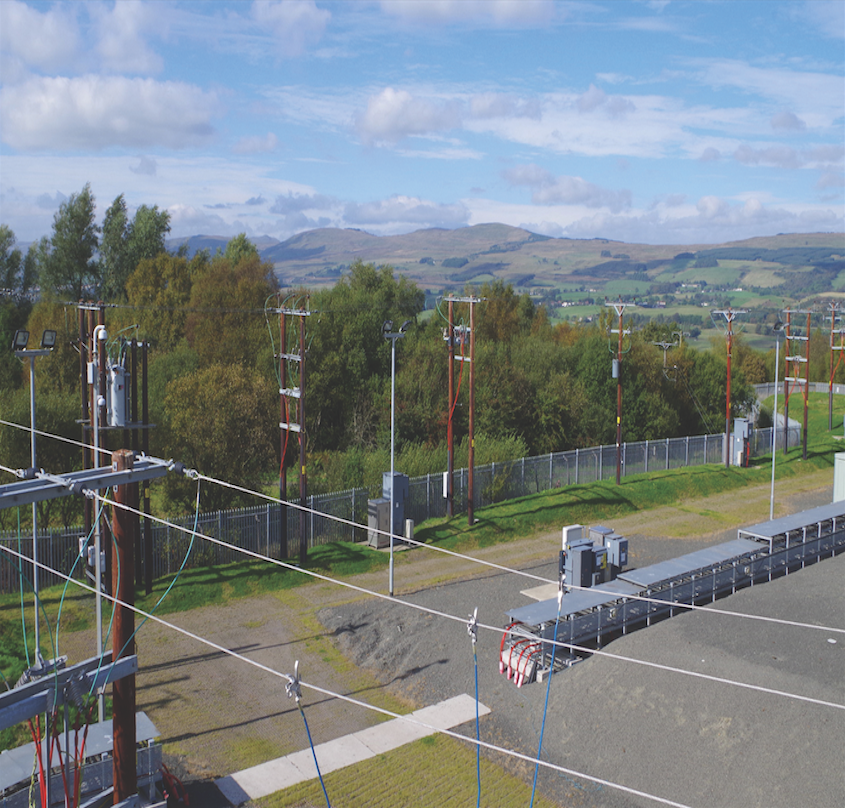
In November the Cambridgeshire- based product design and development consultancy 42 Technology was awarded Innovate UK funding to work with PNDC, in Glasgow, on the development of what it believes is a breakthrough in the form of a low cost conditioning monitoring system for use on the UK’s electricity distribution network. Innovate UK is the operating name of the Technology Strategy Board, the UK’s innovation agency.
The aim is to develop a true low cost approach for potential use across the UK network of over 400 000 substations, to deliver new operating efficiencies by helping operators make more informed investment decisions on repairs, upgrades or adding in new capacity, and minimise the risk of asset failures.
One of the key objectives is a target price of £100 or less per installation. Competitive technologies are considerably more expensive than this.
The new system has the potential to allow distribution network operators to start accurately monitoring the performance of every substation within their part of the network so they can make more informed infrastructure investments and reduce operating costs.
Phase 1 of the project, which is due to end on 31 Jan 2017, aims to put together a sustainable business case for DNO use on numerous substations. Phase 2, should DNOs wish to pursue the development, will then last for around one year assisted by Innovate UK. Phase 2 is expected to see 4-6 months of product development followed by varying levels of field trials accompanied by DNO review and feedback from system management.
“42 Technology’s innovative condition monitoring system offers a real breakthrough in terms of cost, performance and ease of deployment. The system is being specifically designed with a target price of around £100 per installation whereas today’s alternative solutions are more than 10 times as expensive, making them too costly for widespread use,” said Jeremy Carey, managing director of 42 Technology.
Market demand
In a changing world that demands highly efficient and flexible power production and transmission, the UK’s existing network of low voltage secondary substations needs to be carefully managed to match energy supply and demand, and to ensure the existing infrastructure can accommodate emerging social trends such as increasing use of small scale solar installations or charging of electric vehicles. Improved monitoring would allow DNOs to run more of their assets close to capacity, that is, more cost-effectively, while helping them to determine the ideal time to upgrade equipment, replace it, or add new capacity.
Triple Ohm technology
The proposed instrumentation is based on the consultancy’s Triple Ohm technology, a low cost approach for three phase metering applications that has already been developed, patented and prototyped. Triple Ohm is said to offer very high isolation voltages, high data sampling frequencies and can easily be linked to wired or wireless communication networks, making it very suitable for remote monitoring applications.
The work will include development of a recommended system design and an understanding of the key technical and commercial aspects required to help drive a future development programme in partnership with one or more UK-based DNOs. The system can also be adapted for use in international markets, such as US or Europe, where operating companies are similarly looking to improved monitoring as a way of optimising their distribution networks for performance and cost.
The core idea of Triple Ohm is to enable shunt resistors to be used in polyphase systems by ‘galvanically’ isolating shunt sensor electronics with air core transformers and optical links. Triple Ohm takes 3 phase voltage and current measurements, and samples neutral for reference. Current sampling is done via a small shunt resistor to avoid the need for current transformers due to their size and problems of saturation. The shunt resistors are compact – much smaller than current transformers.
No need to power-down
The Triple Ohm proof-of-principle instrument employs a patented isolation technique which confers a high 15kV insulation voltage without sacrificing bandwidth or dynamic range, and increases EMI immunity. The instrument has three terminals with a high current shunt resistor to provide a direct in series connection with an LV terminal. One aim of the development is to introduce the option of substituting with Rogowski coils to enable quick installation without the need to power down the substation – but there is a cost trade off. Nonetheless a requirement for simple live installation has been specified by some DNOs interviewed during market research.
High voltage isolation is achieved by etching the transformer within the PCB to reduce the complexity and size of the metrology unit. Optical data transmission completely isolates the test point circuitry from the processing unit and wireless communications options.
Regarding data transmission, DSOs vary considerably in their need for real time data and data transfer, so this is an area still under discussion. Where DSOs do want wireless data, the preferred transmission protocol varies. It is expected that most of these will be supported via a plug-in module.
New measurement capabilities
The base Triple Ohm unit samples at 1kHz per phase with a 16 bit/sample resolution rendering it TRL7–ready for household smart metering applications. One of the tasks of this latest development will be to increase further the sample rate for greater granularity in harmonic data.
The new system that is being developed under the ‘First of a Kind’ (FOAK) scheme will as mentioned above allow the replacement of the shunt resistors with Rogowski coils as a way of reducing the installation time in secondary substations.
The greatest changes to the unit will be to connectors, and mounting and installation procedure for technicians. Very few changes will be made to the core function of the device. The on-board LCD will be replaced with Bluetooth and GSM for wireless communication with the device.
Processing capability
Digital signal processing (DSP) features will be included on-board for calculating harmonics, including support for onboard calculations. Routine averages of measurements are calculated and transmitted in the form of reports for review by DNOs.






